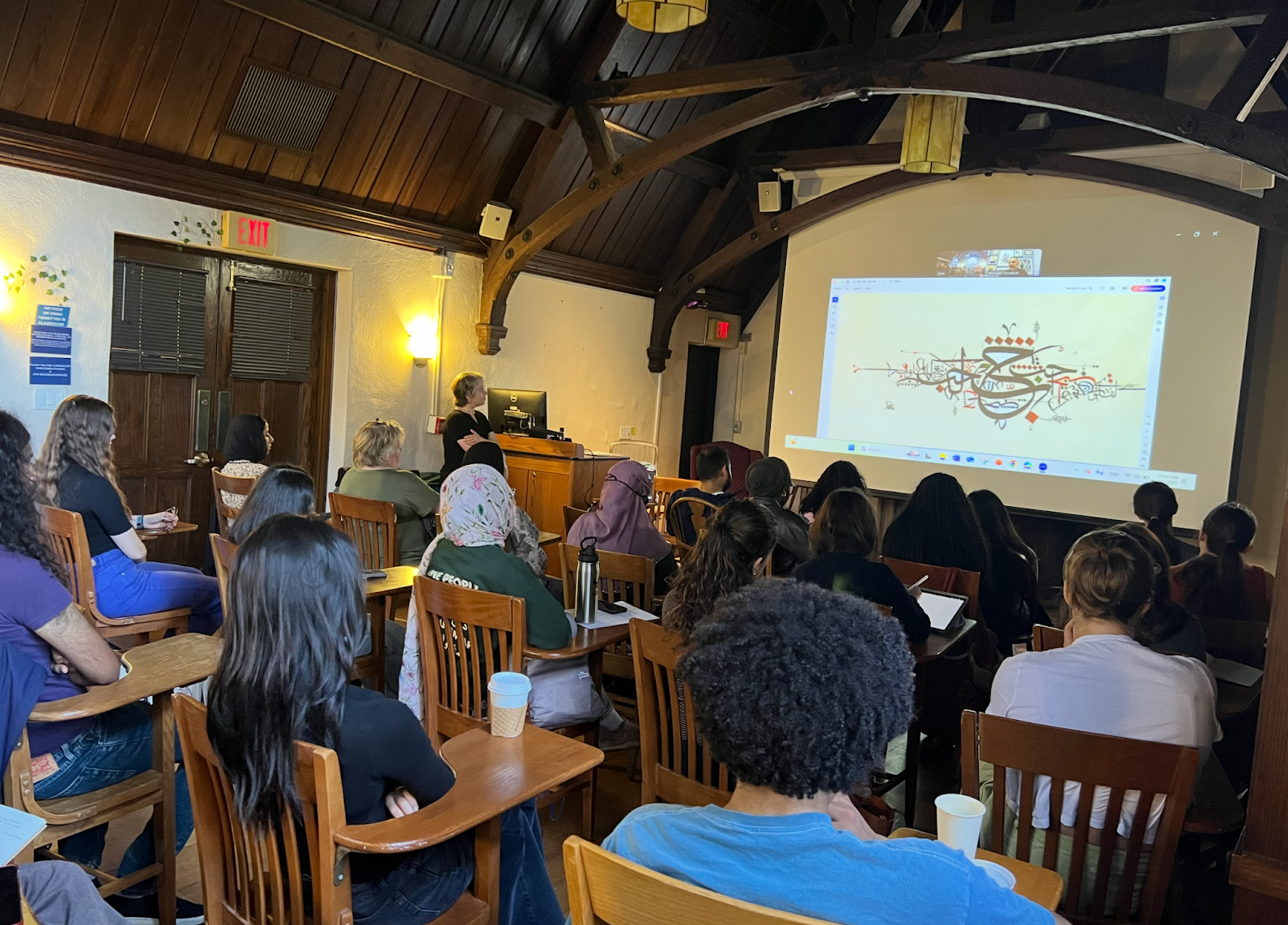Arabic program talk spans historical calligraphy, speaker’s new style
The Iraqi-born artist Wissam Shawkat shared his artistic journey and introduced students to his own innovative style, Calligraforms.

Courtesy of Randa Muhammed
Yale’s Arabic program invited students and community members into the world of Arabic calligraphy through a Wednesday morning event with the award-winning Iraqi-born calligrapher and designer Wissam Shawkat.
Shawkat led the audience from the angular austerity of early Kufic script to the rounded Maghrebi letters of North Africa. He explained how geography and culture shaped each calligraphy style, noting how the same Arabic letters took on distinct identities across centuries and regions.
“A letter is never just a letter,” he told the room. “It carries with it history, place and identity.”
For many students, the talk revealed nuances they had not realized existed inside the script.
“I found the historical aspect of calligraphy very interesting,” Zamzam Aden ’29 said. “I never realized there were so many different types that came from different areas.”
Shawkat also turned inward, recounting his own journey to becoming an artist. He said a teacher’s encouragement sparked his early fascination with calligraphy.
But Shawkat focused on more than history. He introduced students to Calligraforms, a contemporary style he created. In that method, he abstracts and reshapes Arabic letters into independent visual forms, balancing tradition with modern design. Shawkat’s pieces, some of which have appeared in international exhibitions and even in logos for brands like Apple and Rolex, illustrate how a centuries-old script continues to find new life in the 21st century.
The synthesis of innovation and tradition resonated deeply with Sarab Al Ani, the director of the Arabic language program.
“What stood out to me about Shawkat was the fact that he made his own calligraphy style,” she said. “That pursuit of unique expression reflects how we, as a program, also seek unique ways to connect students to the culture behind the language.”
Al Ani emphasized that events like Wednesday’s talk embody the Arabic program’s broader goal of “fostering global engagement through cultural immersion.”
Students across all levels of Arabic attended the event. Beginners and advanced students alike participated in the conversation.
Sabrina Haji ’29 said that it was “inspiring to witness not only Shawkat’s artistry, but also how immersed everyone was in the cultural dimensions of the language they are learning.”
“Listening to an artist’s story and seeing their work helps dissolve cultural barriers and highlights a shared passion for heritage, creativity, and connection,” Al Ani said.On Oct. 13, the Near Eastern Languages and Civilizations Department is set to host a roundtable with two lectures, on Arabic world maps and early Islamic texts.







